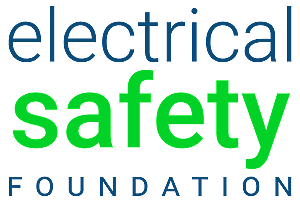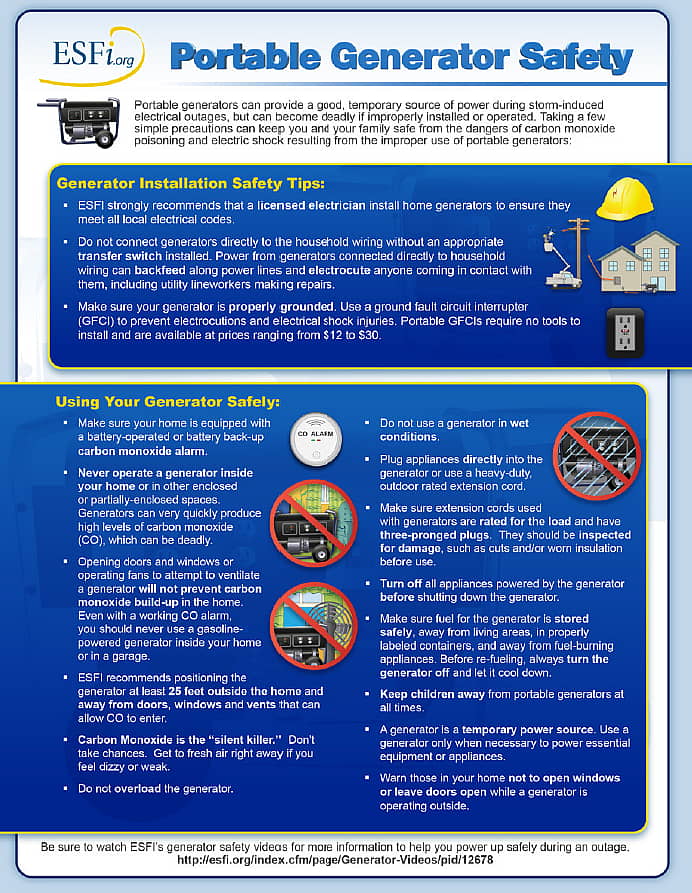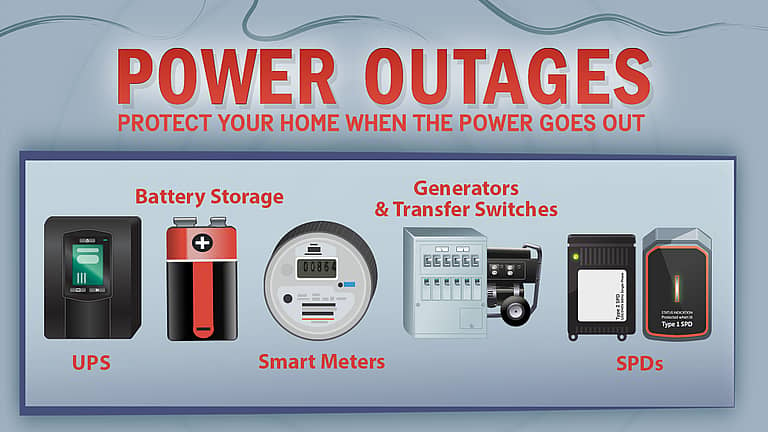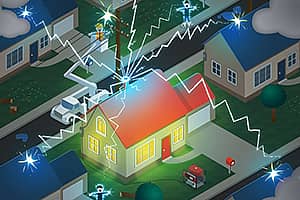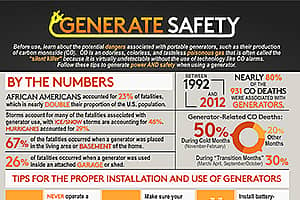Portable generators can provide a good, temporary source of power during electrical outages, but can become deadly if improperly installed or operated.
The Electrical Safety Foundation International (ESFI) urges consumers to become more knowledgeable about electrical safety. Understanding the dangers associated with the use of portable generators could save your life.
Facts and Statistics
- 739 carbon monoxide deaths associated with portable generators were reported to the Consumer Product Safety Commission (CPSC) in the years from 1999-2012. Another 61 fatalities were associated with both a generator and another consumer product (one involved both a generator and another engine-driven tool).
- 69% of the fatalities known to have occurred in the home and involving generators occurred when a generator was placed in the living area or basement of the home. Another 24% occurred when a generator was used inside an attached garage or shed.
- Power outages, most commonly weather-related, were the single most common reason for generator usage that resulted in a non-fire CO fatality, accounting for 30% of fatalities.
- 50% of all portable generator-related carbon monoxide deaths occurred during the winter months (November – February).
Taking a few simple precautions can keep you and your family safe from the dangers of carbon monoxide poisoning and electric shock resulting from the improper use of portable generators:
Generator Installation Safety Tips
- ESFI strongly recommends that a licensed electrician install home generators to ensure they meet all local electrical codes.
- Do not connect generators directly to the household wiring without an appropriate transfer switch installed. Power from generators connected directly to household wiring can backfeed along power lines and electrocute anyone coming in contact with them, including utility lineworkers making repairs.
- Make sure your generator is properly grounded.
- Use a ground fault circuit interrupter (GFCI) to prevent electrocutions and electrical shock injuries. Portable GFCIs require no tools to install and are available at prices ranging from $12 to $30.
Using Your Generator Safely
- Make sure your home is equipped with a battery-operated or battery back-up carbon monoxide alarm.
- Never operate a generator inside your home or in other enclosed or partially-enclosed spaces. Generators can very quickly produce high levels of carbon monoxide (CO), which can be deadly.
- Opening doors and windows or operating fans to attempt to ventilate a generator will not prevent carbon monoxide build-up in the home. Even with a working CO alarm, you should never use a gasoline-powered generator inside your home or in a garage.
- Position the generator outside the home and away from doors, windows and vents that can allow CO to enter the home.
- Carbon Monoxide is the “silent killer.” Don’t take chances. Get to fresh air right away if you feel dizzy or weak.
- Do not overload the generator.
- Plug appliances directly into the generator or use a heavy-duty, outdoor rated extension cord.
- Make sure extension cords used with generators are rated for the load and have three-pronged plugs. They should be inspected for damage, such as cuts and/or worn insulation before use.
- Turn off all appliances powered by the generator before shutting down the generator.
- Make sure fuel for the generator is stored safely, away from living areas, in properly labeled containers, and away from fuel-burning appliances. Before re-fueling, always turn the generator off and let it cool down.
- Keep children away from portable generators at all times.
- A generator is a temporary power source. Use a generator only when necessary to power essential equipment or appliances.
